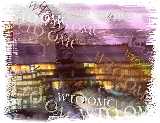- home
- the wto
- ministerials
- seattle
- about the ministerial
- briefing
note

INFORMATION TECHNOLOGY PRODUCTS
Free trade dawns for a dynamic trade sector
A WTO agreement is helping push the information technology revolution forward. Beginning in 2000, most of the world trade in information technology products (worth $680 billion last year for office and telecom equipment, a large part of which are IT products) will be completely free of tariffs under the WTO Information Technology Agreement (ITA), which has been reducing customs duties on IT products such as computers and telecom equipment since 1997, and benefiting offices and consumers across the globe through lower prices.
> Director-General’s message
> Background
> Built-in Agenda
> The WTO agreements and developing countries
> Least-developed countries
> Agriculture (1)
> Agriculture (2)
> Sanitary and phytosanitary (SPS) measures
> Services
> Intellectual property (TRIPS)
> Textiles and clothing
> Trade and environment
> Trade and investment
> Trade facilitation
> Trade and competition policy
> Transparency in government procurement
> Trade and labour standards
> Disputes (1)
> Disputes (2)
> Electronic commerce
> Members and accessions
> Some facts and figures
> Glossary of terms
AND:
> Other ministerial meetings
From the 29 participants that negotiated the ITA during WTO’s first Ministerial Conference in Singapore in December 1996, membership has now risen to 51 that account for 93% of world trade in IT products. The new participants include many developing countries, transition economies and even governments currently negotiating their WTO membership. At an IT symposium organized by the WTO Secretariat in July, several industry representatives attested to the dynamic role of information technology in promoting economic growth in developing countries.
Participation in the ITA means that the country must eliminate tariffs and all other duties and charges on covered IT imports from all WTO members by 1 January 2000. Some participants have been granted longer implementation periods for a few products. The agreement lists in two annexes the products covered, which can be grouped into the following six categories: computers, software, telecom equipment, semiconductors, semiconductor manufacturing equipment and scientific instruments.
Talks on expanding the product coverage (or “ITA II”) began in 1997 when participants began proposing additional IT products for tariff elimination. Negotiations intensified in 1998 when some participants tabled a joint ITA II list. The talks, however, failed to produce an ITA II list acceptable to all participants. One point of contention was the proposed addition of certain electronic consumer goods that are also used with computer products.
Consultations among delegations on ITA II continued informally this year although there had been no formal discussions on this subject in the ITA Committee. Several participants — in the preparatory process for the Ministerial Conference — have proposed concluding an ITA II deal in Seattle.
The current ITA deals only with the elimination of tariffs and not with other trade barriers. At the IT symposium, industry representatives complained that different national safety standards and import licensing requirements have resulted in additional shipment costs — through delays and additional paperwork — that have reduced the benefits of ITA tariff cuts. In the ITA Committee, participants have agreed to examine non-tariff barriers.
Leading traders in office and telecom equipment, 1998
(US$ billions)| Exporters | Importers | ||
| 1. United States | 113.89 |
1. United States | 155.91 |
| 2. Japan | 86.03 |
2. United Kingdom | 47.44 |
| 3. Singapore | 57.60 |
3. Germany | 45.82 |
| 4. United Kingdom | 43.25 |
4. Hong Kong, China | 43.03 |
| 5. Chinese Taipei | 38.44 |
5. Singapore | 37.21 |
| 6. Hong Kong, China | 36.63 |
6. Japan | 36.55 |
| 7. Malaysia | 34.61 |
7. Netherlands | 31.73 |
| 8. Germany | 34.21 |
8. France | 30.93 |
| 9. Korea | 31.82 |
9. Chinese Taipei | 23.79 |
| 10. Netherlands | 30.36 |
10. Canada | 22.69 |